Matador Network's Blog, page 1018
September 9, 2019
Best breakfast spots in Belfast

On a trip to Belfast, breakfast plays two crucial roles. It goes without saying that fueling up for the day ahead should be your top priority in a city with so much to see and do. On top of that, Belfast is a city where the temptation to overindulge the night may be irresistible, and the right breakfast can be your saving grace. Even for the locals. Whatever you have planned for your trip, here’s every breakfast spot you need to know about grabbing the first meal of the day in Belfast.
1. Maggie Mays

Photo: Maggie Mays/Facebook
Located in the Queen’s Quarter, Maggie Mays is as much of an institution among Belfast’s student’s as Queen’s University itself. While Maggie’s has spread to three locations around the city, the original on Botanic Avenue still stands with its mahogany booths and cavernous interior. The menu here is well geared toward the groggy and the price-conscious, but the standout favorite with locals is the bumper fry. This spin on the traditional Ulster fry supplements the bacon, sausage, eggs, and traditional breads with hashbrowns, beans, and a generous helping of hand-cut fries. Everything on the menu is rated on a three-bottle scale of how it performs as a hangover cure, which really says everything you need to know.
Where: 50 Botanic Ave, Belfast BT7 1JR, UK
2. General Merchants

Photo: General Merchants Cafe/Facebook
On the more sophisticated end of the spectrum you’ll find General Merchants on the fashionable Ormeau Road. In 2013, two Belfast natives who were living in Australia spotted a gap in the market for locally sourced, small-plate food in their hometown. General Merchants was born. Be warned: On weekends you’ll need to leave extra time to beat the brunch crowd queueing out the door. At first glance, you may find the breakfast menu slightly jarring, with Irish favorites like porridge and sausage rolls sitting alongside Mexican, Italian, and Indonesian dishes. No matter what you order, you’re unlikely to be disappointed, and General Merchants certainly justifies repeat visits to one of its three locations.
Where: 361 Ormeau Rd, Belfast BT7 3GL, UK, 481 Upper Newtownards Road, Belfast BT4 3LL, UK, and Unnamed Road, Belfast BT8 6FX, UK
3. Belfast Bap Co.

Photo: Belfast BapCo/Facebook
The neglected third son of Irish breads, the Belfast bap has yet to have the hipster-artisan revival enjoyed by its soda and wheaten siblings. The Belfast bap bread is underappreciated by locals and visitors alike with its sticky black crust and pure white center. However, one little stall in Belfast’s St George’s Market is doing justice to the humble bap. With a filling of locally sourced sausages, bacon, potato bread, eggs, and black pudding, the Belfast Bap Co.’s breakfast bap is billed as “big enough to sink the Titanic.” Right enough too: This monster is so tall you’ll have trouble fitting it in your mouth. You may be tempted to mingle around the market and check out the other stalls and entertainment, but you’d be better off finding a table and giving the Belfast bap your full attention.
Where: in St George’s Market at 12-20 East Bridge St, Belfast BT1 3NQ, UK
4. Town Square

Photo: Town Square/Facebook
The self-proclaimed best cafe in Europe, Town Square is on a mission to create a space for people of all walks of life to get together, share ideas, and create art. Head chef Robert Wisniewski is at the core of the restaurant. It’s the place to be for modern cosmopolitan spins on traditional Irish breakfast foods. Town Square’s lighter take on the Ulster fry subs out soda bread and potato farls for sliced Belfast bap and comes served with pickled onion to cut through a dish traditionally heavy on the fried meats. Another standout is the potato hash, which introduces chorizo and mixed peppers to a typically conservative dish of fried potatoes and eggs. Healthier options are available too, with special mention going to the seasonal granola pots.
Where: 45 Botanic Ave, Belfast BT7 1HZ, UK
5. Yahi

Photo: Yahi/Facebook
Located in the Great Northern Mall on Great Victoria Street, Yahi is the top choice for those on the go, whether they be commuters on the way to work or day-trippers heading up the coast via the adjacent train terminal. Skipper Brian Martin is something of a hunter-gatherer at heart, so everything on offer is local, fresh, and unprocessed. If you have time to sit down and indulge, it’s hard to look past the homemade raspberry and white chocolate pancake stack. For breakfast in a hurry, the spicy pork sausage roll with tomato relish loses none of its punch when enjoyed on the go. If the food’s not enough, Yahi also host a number of community outreach events throughout the year, so there’s even a chance you’ll enjoy your morning meal during a surprise performance from the Ulster Orchestra.
Where: Unit 11, Great Northern Mall, Belfast BT2 7AB, UK
6. Established Coffee

Photo: Established Coffee/Facebook
Cathedral Quarter’s Established Coffee is one for the coffee nerds. Kit Harington regularly got his morning cuppa here while filming Game of Thrones. The coffee here speaks for itself, though. On any given day, you’ll be offered the choice of three or four varieties of fair trade coffee beans from around the world. The food is worth shouting about, too. While the menu changes often, reliable favorites include poached eggs on sourdough with a generous helping of black pudding. For those who prefer a sweeter breakfast, it’s impossible to go wrong with the daily pie.
Where: 54 Hill St, Belfast BT1 2LB, UK 

More like this: This map shows the most popular breakfast foods in the UK and Ireland
The post The 6 best places for breakfast in Belfast appeared first on Matador Network.

WOW Air returns

WOW Air, Iceland’s budget airline, collapsed in abrupt and spectacular fashion last March, stranding thousands of passengers around the world. The airline’s demise seemed to spell the end of cheap flights to Iceland and the possible decrease of tourism to the country. But the once-defunct airline is staging a comeback. Starting in October, WOW Air expects to resume flight operations, though it won’t be based in Iceland any longer.
In a press conference that took place in Reykjavik on Friday, it was announced that American aviation firm USAerospace Associates had taken over the bankrupt airline, with plans to relaunch WOW Air under the same name. According to CEO Michele Ballarin, the carrier will now be based in Dulles Airport in Washington, DC, and the first flight will depart from there to Keflavík International Airport.
And while the comeback may be encouraging news, it doesn’t look like it will happen as quickly as its sudden collapse. At first, the airline only plans to operate with two planes but hopes to expand the fleet between 10 and 12 planes in the future. 

More like this: It’s still possible to visit Iceland without all the tourists
The post WOW Air is back and so are cheap flights to Iceland appeared first on Matador Network.

Taj Mahal to stay open at night

Although the Taj Mahal has been fighting overtourism recently, with a number of measures designed to limit traffic — including fining people who stay too long and dramatically increasing the entry fee — it’s now throwing visitors a bone. The popular site just announced that it will soon remain open at night.
Currently, the Taj Mahal is open after sunset only five nights per week — the night of the full moon, as well as the two nights before and after the full moon. But, according to India’s tourism and culture minister Prahlad Singh Patel, the UNESCO World Heritage site will remain open beyond the usual 10:00 AM to 6:00 PM, every night of the month.
Times of India reported that the night visits will only include 400 visitors in eight bunches of 50 people. The entry fee will amount to about $10.50 for international adult visitors.
As part of the new late openings, the Tourism Ministry plans to illuminate the area around the monument, as well as develop new infrastructure to accommodate the influx of night tourism.
There is no current date for the start of the night visits. 

More like this: 4 alternatives to see the Taj Mahal away from the crowds
The post The Taj Mahal will now stay open at night appeared first on Matador Network.

What do if sexually harassed abroad

Being harassed in your own country is challenging enough, but dealing with it abroad is a whole other ball game. Cultural differences and the language barrier add a layer of complexity to what is already a difficult and emotional situation.
There’s no right or wrong way to react. Cultural sensitivity doesn’t mean you need to accept behaviors that make you feel uncomfortable, nor is it your responsibility to confront someone if it compromises your own safety or emotional well-being. On the other hand, educating yourself about gender dynamics abroad can help you make safer choices, which will put you in a far more confident, empowered state of mind.
Being at the receiving end of some unwanted attention is never an easy situation to be in — so to help you out, we’ve pulled together some tips on how to deal with sexual harassment abroad.
1. Know what harassment is.
Sexual harassment is any kind of unwanted attention that’s sexual in nature. It can happen when you’re out and about or come from someone in a supposedly professional environment, such as a hotel, spa, or bar. The general rule of thumb is, if it makes you feel singled out, gross, or scared, then it’s not okay.
Leering, whistling, following, flashing, blocking your path, and groping all count, as do inappropriate comments and failing to respond appropriately to words or body language. Women and members of the LGBTQ community people make up the majority of reported cases, but it’s also an issue for heterosexual men – and don’t let anyone tell you otherwise.
2. Get to know the cultural differences.
As a traveler, you sometimes attract the gaze of curious locals. But what do you do when unwanted attention becomes sexual harassment, and where do you draw the line? In India, men are known to stare or serenade you with Bollywood songs. In parts of the Caribbean, it’s totally normal for men to smooth-talk women in the streets. In the UK and US, construction workers sometimes whistle at female pedestrians. They think they’re just harmlessly showing their appreciation, but for the traveler, it’s annoying, exhausting, and sometimes intimidating. Now to reiterate, none of this is okay. But just so you’re not caught too off guard, it’s always wise to do your research before you visit a new place so you have a better idea of what to expect. You can also ask locals while you’re there to see what they find acceptable and how they react.
Every situation is different and there’s no perfect solution, but your top priority should be physical and emotional well-being. Sometimes, the best response is to not engage at all. At other times, you need to let someone know they’ve crossed a line.
3. Dress appropriately.
Let’s get one thing straight: No one should have to put up with sexual harassment because of what they’re wearing. That said, having an understanding of cultural differences and dressing accordingly will give you confidence and lower your chances of attracting unwanted attention.
Research your destination and find out what’s appropriate to wear. This doesn’t mean you have to dress exactly like the locals, but you can achieve the same levels of coverage with a long-sleeved blouse or T-shirt, loose-fitting linen trousers or, if necessary, a headscarf. And remember, dress codes vary from region to region, which means what might be okay in a cosmopolitan capital may raise a few eyebrows in a remote rural village.
4. Be prepared.
While you shouldn’t travel in fear, having the means to protect yourself and deal with dangerous situations should give you more confidence. If you’re traveling somewhere that’s known to be unsafe, consider carrying a whistle and pepper spray with you (or a mixture of pepper or chili seeds in a water bottle) to attract attention and scare off an attacker. And when walking around a city, plan the safest route before you leave your accommodation, especially when traveling around at night. Pick well-lit main roads populated with shops or bars, while avoiding quiet streets and parks after dark.
5. Trust your gut.
Once while on vacation, I left a busy walled city and climbed up to a quiet viewpoint, which was essentially a plateau sticking out of a deep basin. To reach it, I had to cross a narrow walkway. As soon as I approached, I noticed two men on opposite sides simultaneously run down into the basin. It may have been nothing, but the situation didn’t feel right, so I left and went back to the city. Sure, I didn’t get to see the town from up high, but do I regret my decision to leave? Nope.
If you feel uncomfortable, trust your gut. Cross the street, change direction, or run into a crowd if you sense danger. That may mean leaving wherever you are, attracting the attention of a passing police officer, or simply running away. And if you’re heading somewhere quiet, like a viewpoint above a city, make sure you have an exit strategy.
6. Address the situation appropriately.
Sometimes, ignoring someone is the best option — but if they grab you, you may have to fight back. Getting away is your number one priority as opposed to inflicting damage (tempting though it may be), so push them off, move to a crowded place, and contact the authorities. If the assault is more covert — someone gropes you on public transport, for example — try to move away from them. If they continue to touch you, loudly tell them to stop; other people should notice the problem and help you out. At the very least, the shock of being confronted should force the grabby person to back off.
Whatever the situation, it’s important to make people around you understand what’s going on so they can step in. This is especially important if you’re a man being harassed: If there’s a language barrier, locals may think you’re starting a fight if you don’t make it clear what’s going on.
7. Speak out.
Keep the number of local authorities in your phone so you can call them in a snip. You may not want the hassle of dealing with the police while you’re traveling, but think of it this way: If you report the incident, they may be able to punish the harasser which could save more people from going through the same thing you did.
It’s also important to be aware that the police might not help you, especially in patriarchal countries where women and LGBTQ people endure daily harassment and persecution. In this situation, try to keep your cool (upsetting though it may be) and walk away. If the assault was serious, seek medical help as soon as possible from a clinic or hospital (you don’t have to report the incident if you don’t want to), contact your local embassy, and consider calling a trusted friend, family member, therapist, or crisis line for support. Many countries have organizations that provide help. If you search your country’s name with “sexual assault assistance,” you’re likely to find groups that can help you navigate the emotional, physical, and legal aspects associated with sexual harassment or assault.
If you feel comfortable doing so, consider sharing your story. This could range from posting a warning on social media to getting involved with political groups like Hollaback, which aim to change the culture of sexual harassment. Speaking out not only helps remove the stigma of talking about sexual harassment but also helps you take control of the situation, which can feel empowering.
8. Don’t pretend it didn’t happen.
Sexual harassment of all kinds is traumatic and it’s completely normal to feel upset, confused, ashamed, angry, or numb afterward. Remember, you’re not to blame even if your harasser was someone you know, you’ve previously been sexually intimate with that person, you were drunk or high, or you froze and didn’t say “no.”
While most sexual incidents involve a man attacking a woman, this is by no means the only scenario. There’s a mistaken belief that males can’t be sexually harassed, which perpetuates a cycle of victims not reporting the crime or being too ashamed to talk about it. The idea of being a victim may be difficult for some guys to deal with, but it’s important to know that you’re not alone and these emotions are normal.
9. Take care of yourself.
Whatever your gender, whatever the situation, you may not be able to function 100 percent after an incident and struggle with things like concentration, lagging energy, and irritability. Again, this is totally normal. Spend some time recuperating and don’t rush into social activities before you feel ready. Take care of yourself with a balanced sleep and mealtime schedule; do relaxing things like reading, meditation, exercise, or whatever you usually do to unwind; and, if you feel comfortable doing so, talk to someone you trust.
10. Don’t travel in fear.
People are usually proud of their country, and in the majority of cases, they look out for visitors. That said, if you think you’ll be uncomfortable as a female traveler in a particularly patriarchal society, or you’re an LGBTQ person considering a trip to a country where homosexuality is illegal, you should think carefully about how pleasurable and enriching the experience will be for you. Only you know what you’re comfortable with, and if you’ve researched your destination and have thoroughly prepared, you’re way more likely to have an amazing, incident-free experience. 

More like this: 10 sexual practices from around the globe that remind us the world is a big, beautiful place
The post How to deal with sexual harassment abroad appeared first on Matador Network.

What to order at an airport bar

This is the Travel Take, where Matador’s writers and editors make the case for their favorite travel hacks, tips, and personal tics.
There are a lot of things you can’t control at the airport. Delays, for one, as well as over-eager TSA agents. Thankfully, there’s a refuge past security where you make the choices: the airport bar. It’s just like any other bar, but with a little more restrained chaos and a lot more acceptance for solo bar-goers. The main difference, however, is that there’s really only one optimal drink at an airport bar: the pre-flight Martini.
A Martini is the perfect fix for anyone in search of something to ease the doldrums of flying. And by anyone, I mean anyone. The sweaty couple who just missed their flight, anxious travelers, business travelers, the Chatty Chads on their way to a bachelor party — you get the point. All come to the airport watering hole for entertainment and relaxation, all leave with varying levels of satisfaction if they’re not following the one-Martini rule.
A Martini is easy, cold, and strong. Martinis lack the sugar of an Old Fashioned and Margarita, so no syrupy mouth before boarding. It’s also a more sure bet than that expensive glass of cheap wine that’s been open for a questionable number of weeks. Most importantly, and I can’t emphasize this enough, Martinis have far less liquid than a standard beer, so you won’t be squeezing past seats B and C on your way to the bathroom right when the fasten seatbelt sign goes off.
My faith in the pre-flight Martini stems more from what can go wrong than what can go right. The worst thing that’s happened to my go-to order is when the bartender at a Buffalo Wild Wings airport bar used a lime twist instead of a lemon twist. And I took it out. What you can’t take out is bad whiskey, cheap tequila, or saccharine red wine. Don’t even get me started on dirty draft lines delivering beer in less than prime condition. With a Martini, the house gin is likely one I would’ve chosen otherwise, like Tanqueray, Bombay Sapphire, or, if I’m lucky, Plymouth. It’s true that it’ll probably be shaken, but embrace Bond’s poor taste for a bit and drink down those little ice shards. Martinis are also something every bartender knows, unlike the many unbalanced cocktails filling the bar’s “custom cocktail” menu. That means no stress of having to chug when you’re presented with a drink 15 minutes after you ordered.
It won’t be the best Martini you’ve ever had, but it checks all the right boxes.
There are, of course, exceptions. This burgeoning new world of local airport dining means regional spirits may be on the menu, or maybe you’re at a bar run by a town’s beloved (and detail-oriented) craft brewery. If that’s the case, by all means, go local. I’m no stranger to the New Belgium hub in Denver International Airport, and I strongly suggest a tasting flight of Portland’s own Westward Whiskey at the tasting room in the Portland International Airport. These are exceptions, however, not the norm.
So much attention goes to what to drink during the flight (yes, everything you’ve heard about in-flight Bloody Marys is true) that we often neglect the more immediate decision of what to drink before. Luckily, it’s not a hard decision or a long conversation. Order a pre-flight Martini. That ice-cold glass of satisfaction is just the right balance of alcohol-to-liquid to make even a cross-country flight between two babies manageable. 

More like this: Airport food is actually good now, at least at these US airports
The post If you’re not ordering a Martini at the airport, you’re doing it wrong appeared first on Matador Network.

Queer Eye’s Japan special coming

The Queer Eye cast has a new special coming up, and if you’re a fan of the show you’re going to want to mark your calendar. Last Thursday, Netflix announced that the long-awaited Tokyo season of Queer Eye will be available on November 1.
The four-episode stint titled Queer Eye: We’re in Japan! will feature Jonathan, Karamo, Bobby, Antoni, and Tan, as well as some special local guest stars, like model and actress Kiko Mizuhara and comedian Naomi Watanabe.
As per usual, the Fab Five will give four Tokyo residents a complete makeover, from their clothes to their hair to their eating habits, general mental wellness, and the interior decor of their home. The group will also be taking full advantage of the new culture, sampling Japanese cuisine, and diving into local fashion, grooming, and culture.
In case the anticipation wasn’t already too much for you, Antoni Porowski shared the official teaser trailer on Twitter. 
We back Nov. 1st w special episodes of Queer Eye: We’re in Japan! pic.twitter.com/ujlABejbCO
— Antoni Porowski (@antoni) 6 septembre 2019

More like this: The best resources for LGBTQ+ travelers to have on hand
The post Queer Eye’s Fab Five are hitting Japan this fall appeared first on Matador Network.

September 6, 2019
How roller coasters are designed

When you’re falling towards the ground at 165 miles an hour, you really don’t have time to think about everything that went into making that terrifying moment happen. In the adrenaline-pumping moments riding a big-time roller coaster, it’s hard to imagine it was all carefully planned out years ago by a team of creative designers.
But roller coaster thrills don’t happen by accident, and the people who design every loop, bank, inversion, and drop spend literally half a decade crafting your experience. We chatted with Jeff Havlik, a roller coaster design expert with renowned design firm PGAV Destinations, who has designed such coasters at the Manta at SeaWorld Orlando and the Parrot Coaster at Chimelong Ocean Kingdom in Guangdong, China. He gave us some rare insight into the action-packed world of roller coaster design.
Finding a story and theme to match a park’s objective

Photo: SeaWorld Orlando
Before doing anything, designers work with park owners to figure out what, exactly, they’re trying to accomplish with a ride. Are they trying to rebrand themselves as a thrill park? Outdo the crazy coaster at a competing park? Bring in a new demographic?
When PGAV designed a new coaster for SeaWorld, for example, the aim was to appeal to the “teen veto” factor where adults and small children would want to visit the park, but teens would reject the idea because there was nothing for them to do.
“This was how we developed Journey to Atlantis,” Havlik said of SeaWorld’s first adult-oriented coaster. “It was designed to have a rich storyline and an aquatic theme but be thrilling enough teens would want to ride it.”
From there, designers develop a storyline to run throughout the ride, beginning in the queueing area, continuing to the boarding station, onto the ride itself, and into the exit/gift shop.
“One of the best examples of that is the Manta Ray at SeaWorld,” Havlik said. “We started by figuring out how to tell the story of ocean and rays. So we had the queue go through an extensive ray exhibit so people could see how they glide, move, and interact. Then we wanted to translate that feeling of flying through the water like a manta ray on the ride. But you’re flying through the air on a coaster.”
So Havlik and his team developed a flying coaster, one whose track is above the rider to give the sensation of flying. Though it’s not a particularly aggressive ride, the two-minute-and-36-second ride takes guests gliding, diving, and looping like a ray might in the ocean.
Designing a roller coaster for everyone — even people not riding
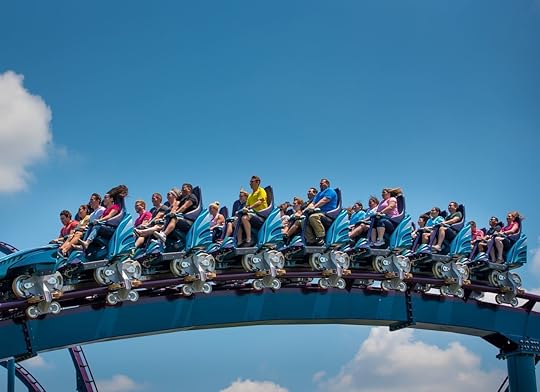
Photo: SeaWorld Orlando
Roller coaster riders make up as little as 20 percent of guests at a theme park, and they rarely comprise more than half. Which means a good coaster must also capture the imagination of those not riding it.
“One of the things we think is very important is not excluding the people who don’t ride the ride,” Havlik said. “With Manta, you can see the same aquarium queued riders see in a separate line. At the loop right after the drop, the ride goes right into a trench, and if your family is standing there, they can see you and take your photo.”
The ride’s signature move, a “wing dip” where the coaster appears to skim across the water spraying water in all directions, isn’t even visible to riders as the water actually follows the cars. It’s meant entirely for the spectators.
Pacing a ride though the art of anticipation

Photo: SeaWorld Orlando
Once the storyline and aesthetics are finished, designers begin looking at how the ride will flow.
“We don’t want to do full-out scream experiences, where you’re disoriented the entire time,” Havlik said. “We look at it more like creating a symphony, with rises, falls, and crescendos.”
To do that, designers play on the psychology of anticipation.
The anticipation builds as the riders stand in line, engulfing them in the story they are about to experience. It continues in the boarding station, as they’re purposefully meant to see other people finishing the ride, looking exhilarated and wind-blown. This both builds anticipation and subtly instructs riders on how to enter and exit the coaster to make the process faster.
Next comes the “lift,” or the first big build of the ride. It’s meant to make the ride feel like it lasts longer and hold that giddy, nervous sense of, “What’s going to happen next,” so when the big drop does come it feels even more intense than if you’d shot straight into it.
From there the coaster is meant to mimic life, with highs, lows, and lulls in between. But it can’t be all twists and turns, nor can it be a gentle careening trip through the park.
“There’s a balancing act,” Havlik said. “It’s a symphony of anticipation and surprises. You’re not always telling the guest what’s gonna happen but also not making them uncomfortable. Not knowing what’s coming next means you can’t brace for it, so that adds to the thrill factor. But it also adds to the uncomfortable-ness of the ride.”
Instead, designers pace the ride with precise detail, leaving intense moments followed by moments just long enough for you to process what you’ve been through before careening through another corkscrew.
Using human water bottles to make sure it works

Photo: SeaWorld Orlando
After the pace of the ride is set, designers determine how the coaster will fit on the site, where each element will be, and how it will work with the park and its pathways. They’ll go over it with the park owners, then with the ride manufacturer, which makes its own adjustment. The plan goes back and forth two or three times before settling on a final.
Once everyone agrees on a design, PGAV creates a 3D model so owners can “ride the ride” in a mocked up environment called “The Hive.”
After that’s approved, manufacturers go through a series of structural calculations, figuring out things like the amount of G-forces that will be on each guest and how much steel is needed for the desired columns. Once they complete calculations, the manufacturer begins making track sections, assembling columns, and putting together all the pieces that will someday make a roller coaster. Everything is constructed over several months and shipped piece by piece to the coaster site.
Over the next few months, the coaster is assembled on site, then must undergo two to three months of testing before a single person is allowed on. Testers use water bottles meant to simulate human bodies to examine the effects of gravity on potential guests, and the ride must go through a predetermined number of testing hours before it can be certified by the American Society of Testing and Materials (Europe and the Middle East have their own certification body, the TUV).
“It’s also a breaking-in period, like sitting in a new leather chair that feels kinda hard, then after a while it conforms and feels comfortable,” Havlik added. “Same thing with a coaster. Brand new wheels, bearings, everything is all tightened up; it doesn’t run as smoothly until it’s gone around the track several hundred times.”
After the coaster is tested and broken in, it’s ready for its first riders. The entire process takes anywhere from three to five years, from inception to opening, and sometimes puts parks in the hole $30-60 million before a single person steps onboard. Think about that the next time you wonder why your admission ticket is $100.
These figures, Havlik said, are for custom coasters made with existing technology. Coasters that duplicate existing rides with slight modifications for space will take less time. Prototypical coasters like the ones found at Disney parks and Universal Studios can take up to eight years. All of them are expensive.
But when you’re being hurtled upside-down high above the Ohio countryside, none of that seems to matter. It’s a long journey from idea to thrill, but for those brief couple of minutes, it all seems worth it. Just remember the next time you’re sweating through a hot afternoon on a roller coaster line that you’re not the only one who put in hours for this all to happen. 

More like this: New Jersey Six Flags is getting the longest, fastest roller coaster in the world
The post The fascinating process behind big-time roller coaster design appeared first on Matador Network.

South African xenophobia riots
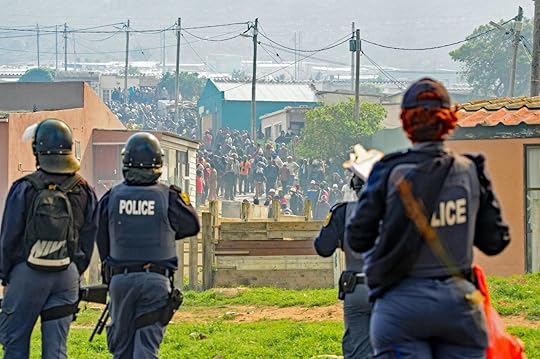
South Africa has been plagued by riots directed against Nigerian-owned businesses, and tensions are high between the two countries. Fueled by xenophobia, people in the capital of Johannesburg are angry over unemployment and poor living conditions, and they’re taking it out on shops and property owned by immigrants, mostly from Nigeria. It’s gotten so bad that reprisals have started to take place in Nigeria, with South African-owned shops being vandalized and attacked. On Wednesday, South Africa even closed its diplomatic missions in the Nigerian cities of Abuja and Lagos.
Lunga Ngquengelele, a South Africa Foreign Ministry spokesman, said, “After receiving reports and threats from some of the Nigerians, we decided to temporarily close while we are assessing the situation.” Yemi Osinbajo, the Nigerian vice president, has also canceled his participation in the World Economic Forum’s annual Africa meeting, which is taking place in Cape Town. Other countries, like Rwanda, Malawi, and Congo, are also protesting the xenophobic attacks by pulling out of the forum.
The riots were incited by growing anger among the country’s young people who are unable to find jobs and blame Nigerians for their economic difficulties. Lerato Mbele, a BBC anchor who spoke at the World Economic Forum meeting, insists that South Africa is not a nation of xenophobes. “We are not the people you see being reported on our television screen,” she said. “We have a young, disenchanted population looking for jobs… but in the main, South Africans relish you coming to our country.”
Although over 200 arrests have been made, authorities are being criticized for not doing enough to manage the situation. The situation is still developing, however, and so is the government’s response as time goes on. 

More like this: The most epic day at Cape Point, on the edge of Africa
The post What you need to know about the South African riots appeared first on Matador Network.

Bolivia wildfires destroy rock art

The massive wildfires in the Amazon have legitimately drawn international attention this summer, but blazes in other parts of South America have also been quietly wreaking havoc. Bolivia is said to have lost at least 3.2 million acres of forest and grassland since May due to the fires raging in the eastern part of the country, and with them comes the destruction of invaluable ancient heritage.
Archeologists fear that Bolivia’s historic rock art sites, including engravings dating back thousands of years, have suffered greatly from the fires. Danilo Drakic, chief archeologist in the eastern Santa Cruz department, said to Agence France Press, “We believe that the damage is big and wide in terms of our heritage of rock art.” He added that a “dark layer of soot has covered all the paintings,” and the fire’s heat has “caused stones to break, even to collapse.”
According to the Bolivian Rock Art Research Society, the country is home to over 1,000 rock carving and painting sites, mostly gracing the walls of small caves and rock shelters, the sides of cliffs, and large boulders. The drawings take many forms, from a six-foot-long serpent to llama engravings to geometric patterns and petroglyphs.
Until the fires have ceased, experts will be unable to assess the damage inflicted on the rock art.
Much like the situation in Brazil, the fires have largely been set by farmers encouraged by President Evo Morales’ policies supporting pro-agrarian businesses. 

More like this: 8 destinations to learn more about the origins of humans
The post Bolivia is losing invaluable ancient rock art to wildfires appeared first on Matador Network.

Tracks Across Borders Byway drive
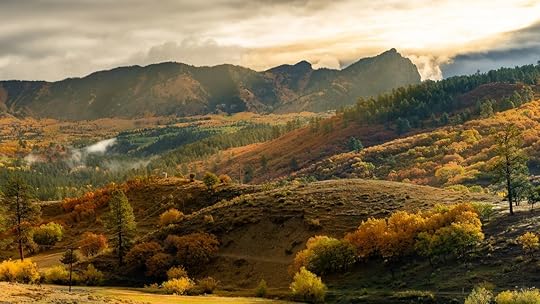
A byway is a lane that diverts from a main road, and the newly designated Tracks Across Borders Byway is certainly off the beaten path — connecting towns in Colorado and New Mexico that have fewer than 30,000 residents between them. Yet this secondary road crosses significant borders, taking you across state lines, opening windows into historical and cultural eras, and showcasing stunning and diverse natural landscapes. Here’s how to spend the day traveling along this historic passageway in the American West.
Planning and routing the trip
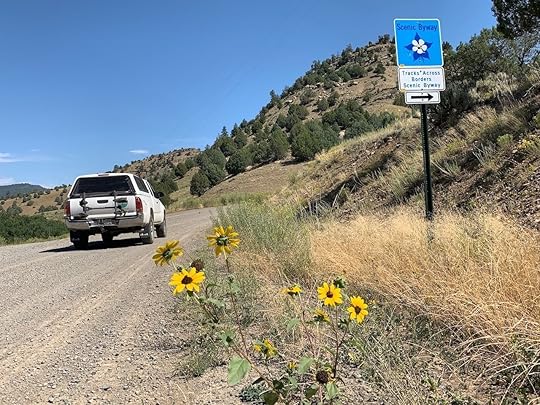
Photo: Alisha Wenger
Technically, the “borders” part of the Tracks Across Borders Byway refers to the fact that the tour takes drivers across state lines from Colorado to New Mexico. But the rugged San Juan Mountains don’t stop the moment Colorado ends, so you’ll hardly notice this distinction.
The more important border crossing is from the college mountain town of Durango, Colorado, to the vast and diverse landscapes of the Southern Ute Indian Reservation on the tour’s front end and eventually onto the Jicarilla Apache National Reservation closer to Chama. En route, you’ll challenge your understanding of American history — and your car’s off-road capability.
The drive itself is just under 100 miles and takes about four hours from Durango to Chama, with another 45 minutes north to Pagosa Springs. With the recommended stops, allow a full day for the trip. If you plan to ride the Cumbres Toltec Scenic Railway, as we discuss below, allow an overnight in either Pagosa Springs or Chama, with the Fireside Cabins in Pagosa being an ideal spot to crash.
While much of the driving is on a gravel road, it’s well-maintained and free of pesky washboard ruts, so most vehicles with decent tires can do the drive. Have breakfast in Durango before heading out, and bring a cooler stocked with lunch, snacks, and cold beverages including plenty of water.
Stay in the hotel where the Old West comes alive
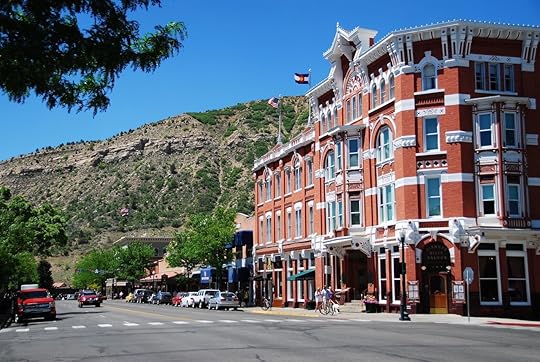
Photo: WorldPictures/Shutterstock
Start your historical tour at the aptly historic Strater Hotel in Durango. This hotel opened in 1887 and is about as close as one can get to actually being inside a Western movie. The hotel has, in fact, been a filming location of multiple flicks, including National Lampoon’s Vacation, wherein Chevy Chase himself strolls up to the hotel’s front desk.
What you don’t see in the movies, though, are the subtle pieces of American history tucked into the hotel’s walls. A knurl in the wall holding up the main stairwell in the lobby pulls out to reveal a small crevice. During Prohibition, guests would deposit cash into this crevice before retrieving a bottle of the good stuff from a similar opening hidden further inside the hotel.
If you can, reserve Room 222, which is where the writer Louis L’Amour spent multiple extended stays and crafted much of his Sackett novels. The room is also directly above the Diamond Belle Saloon, which reenacts old Western looting scenes on the regular and will probably have a horse and carriage parked out front when you arrive.
Reserve well in advance, though, as Room 222 is frequently booked by aspiring writers looking to catch a whiff of L’Amour’s linguistic magic. You can stay at the Strater or just stop by for a tour and a drink at either the Diamond Belle or The Office Spiritorium.
Crossing onto the Southern Ute Indian Reservation
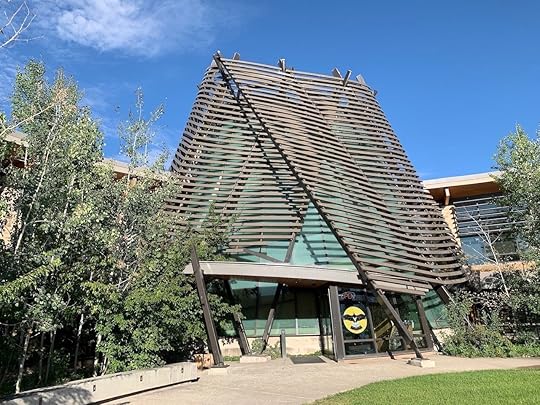
Photo: Alisha Wenger
The next stop and the first official point on the Tracks Across Borders Byway is the Southern Ute Cultural Center in the Southern Ute town of Ignacio, about 30 minutes southeast of Durango. Ignacio, a town of fewer than 1,000, houses a few architectural standouts that would not look out of place either on the Santa Fe Plaza or the Vegas strip.
The town’s skyline, as it were, is dominated by the massive Sky Ute Casino Resort, which greets arrivals to Ignacio with a Ute facade lit by the sun as it passes over the San Juans. Adjacent to the casino, in contrast, stands the Cultural Center, which opened in 2011.
It’s anchored by a graceful gallery hall ringed in opaque glass symbolizing a teepee, while its top is wrapped in a metal lining to represent a traditional domed structure called a wickiup. The center itself stands as a multi-fold mission, aiming to preserve the traditions and lifestyle of the Southern Ute tribe and, for the elders born of them, as a living museum of their stories.
“It was started so that tribal members had a place to bring their Ute objects,” the center’s Director Linda Baker told me as we walked through the open gallery space. “Not so much for show but as a way to protect them.”
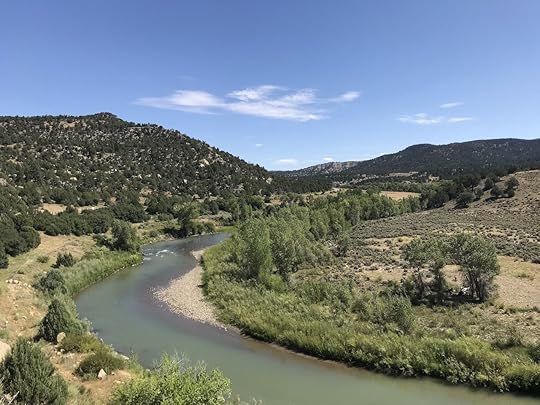
Photo: Tim Wenger
The Cultural Center highlights the history of not only the tribe but also of the reservations on which they’ve been cast by the United States government. In Ute culture, the wolf represents the creator providing for its pack and serving as its protector. Here, you’ll see the wolf depicted in many of the 4,000 items kept onsite. The exhibits showcase, through centuries of struggle, the tribe’s determination to keep their culture alive.
The Cultural Center is a signal of the tribe’s success at these efforts. Beyond the reservations themselves, neither government schooling nor being forbidden from speaking their own language managed to puncture the spirit of the Utes. While it’s impossible to say that full reparations have been made, or ever will be, today, the Utes are a self-governing nation, carrying on their traditions and connecting them to the modern world.
There is one permanent gallery of Ute artifacts on site: a small exhibit honoring Ute military veterans, and a rotating cast of exhibits that tend to switch every six months or so. The aesthetic is calming and peaceful, full of natural light and vivid colors, and welcoming for individuals or tour groups.
“We want to show what makes us Utes and what defines the tribe,” Baker said. What you stand to gain as a visitor is an appreciation for the land the Utes have called home for centuries and the history of their people here.
Head off the paved road and into the past
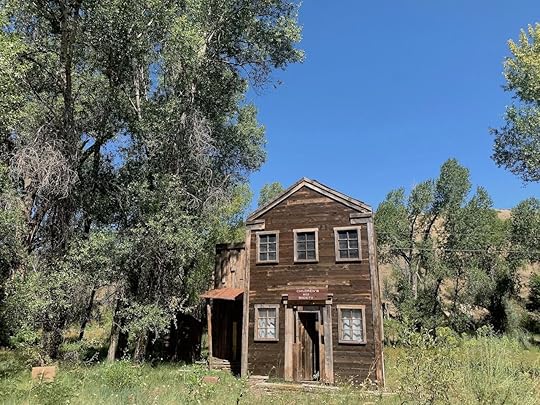
Photo: Alisha Wenger
From Ignacio, the Tracks Across Borders route takes you south from Ignacio on Archuleta County Roads 500 and 551, with a sharp right turn onto CR 169, depositing you into New Mexico. Along the way, you’ll wind along gravel road past Old West structures that, despite being all but dilapidated now, evoke the Old West of the 1800s. You’ll pass several old wooden homes and a barely standing structure labeled “Children’s Aid Society.”
Much earlier than the 1800s, though, this area was more populated than it is today. When Spanish conquistadors stormed onto the hillsides surrounding Chimney Rock in the 1600s, they encountered no fewer than 60,000 Ancestral Puebloans, and many archaeologists believe that numbers were higher earlier on.
The scenery here is picture-perfect Southwest: rolling, tree-covered hills converging head-on with rugged, barren, high-altitude desert. Imagining the Native Americans creating entire villages in this brutally beautiful and intimidating environment without the use of modern tools and transportation is enough to make one question our own architectural and domestic prowess.
You’ll want to stop repeatedly to photograph the structures and the landscape beyond the winding San Juan and Navajo Rivers as they carve the terrain and simultaneously lead your way through it. By the time you cross state borders, you’re firmly out into the undeveloped countryside surrounding the region’s relatively isolated towns. You’ll pass the La Juita and Ishkoten Canyons, which aren’t necessarily hikeable but make a solid spot to pull over for a picnic lunch.
The route is marked by Tracks Across Borders Byway signs, but do yourself a favor and screenshot the directions on your phone before leaving Ignacio. There’s no cell service for most of the route, and a wrong turn could take you quite far in the wrong direction. You’ll pull back onto paved road shortly before reaching the town of Dulce, capital of the Jicarilla Apache Nation. From here, Chama is 30 minutes down US Highway 64.
Hop the train in Chama

Photo: Donna Chance Hall/Shutterstock
Chama, a town of about 1,000 people in northern New Mexico, is the final official stop. This is the ideal place to learn about one of the most important aspects of the American West: the Denver & Rio Grande Railroad. In 1920, the railroad connected the country to this part of the West and sent into full swing the mining, oil, and gas exploration that drove the economies of the isolated small towns far removed from the bustle of the East Coast. It was Colorado’s first narrow gauge railway and would be the nation’s largest.
You can experience this narrow gauge railway through Chama’s primary attraction, The Cumbres Toltec Scenic Railroad, which has been in operation in one form or another since 1880 — as part of a cross-country railroad and serving the mining communities of the San Juans. Back then, rail was the only mode of accelerated transport, allowing isolated towns like Chama, Silverton, and Telluride to remain in operation through the cold and snowy winter months. When the nearby city of Farmington experienced an oil boom in the 1950s, the train was there to transport products, workers, and materials in and out of town.
These days, the train is another living piece of Southwest history and offers stunning views of the peaks surrounding Cumbres Pass. Ride the train on a half or full-day trip if possible. The “borders” thing comes back into play here, as well, as the train crosses the Colorado-New Mexico border 11 times during its 64-mile journey between Chama and Antonito, CO.
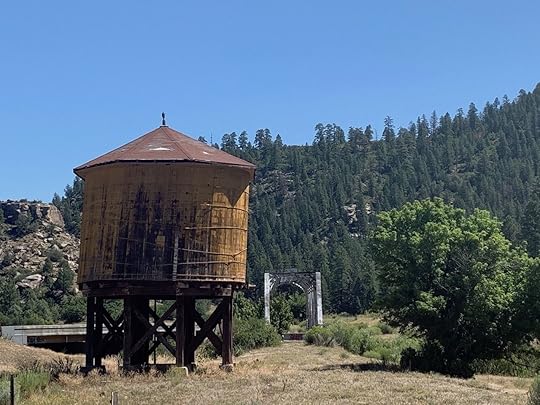
Photo: Alisha Wenger
The Cumbres Toltec stands as a reference point to the history of the Southwest, documenting the rise and fall of multiple industries and the people who shaped them and, in turn, shaped the America that we know today.
“This railroad was built by immigrants looking for a better life, and it still stands as a symbol of that,” said John Bush, the railroad’s President and General Manager. “It’s a time capsule of what the world looked like in 1920… It’s too cool and too important to let it die. If you don’t know where you’ve been, it’s hard to chart a course forward.”
The fact that the railroad is still in operation, even as a tourist attraction, also serves as a significant symbol for the resilience of the Four Corners region. Oil and gas and mining, two industries that shaped the area, have been in sharp decline, and the region is capitalizing on its recreational and tourist offerings to revitalize its economy.
“Our challenge now is to convince the younger generation that [the railroad is] a way to not only connect with the past but to experience the authentic West,” says Bush. In 1969, the states of Colorado and New Mexico purchased the train with two goals: tourism and historic preservation. A 10-year program is now in place to make the train self-sustaining through improved ridership and continued support from the states.
Visit Ancestral Puebloan ruins at Chimney Rock National Monument

Photo: Alisha Wenger
Pulling out of Chama, head north to Pagosa Springs and Chimney Rock National Monument. This is the best way to add a bit of physical exertion to your trip after driving the Tracks Across Borders Byway. At 7,400 feet in elevation, Chimney Rock’s highest hikeable point is barely a scratch on the surface of Colorado hiking.
But the Ancestral Puebloan ruins along the way are the highlight, offering a glimpse into the Puebloan way of life that dominated this area from about the years 100 to 1600. Preserved and often modified versions of their shelter, communal cooking, and gathering spaces are located along the short hike, which can be done individually or with a guide. Finish your evening soaking in the sulfur and mineral baths at The Springs Resort in downtown Pagosa, a collection of two dozen hot springs baths along the San Juan River. 

More like this: How to bike the Fruit & Wine Byway in Palisade, Colorado
The post This historic byway will reshape your view of the American West appeared first on Matador Network.

Matador Network's Blog
- Matador Network's profile
- 6 followers



